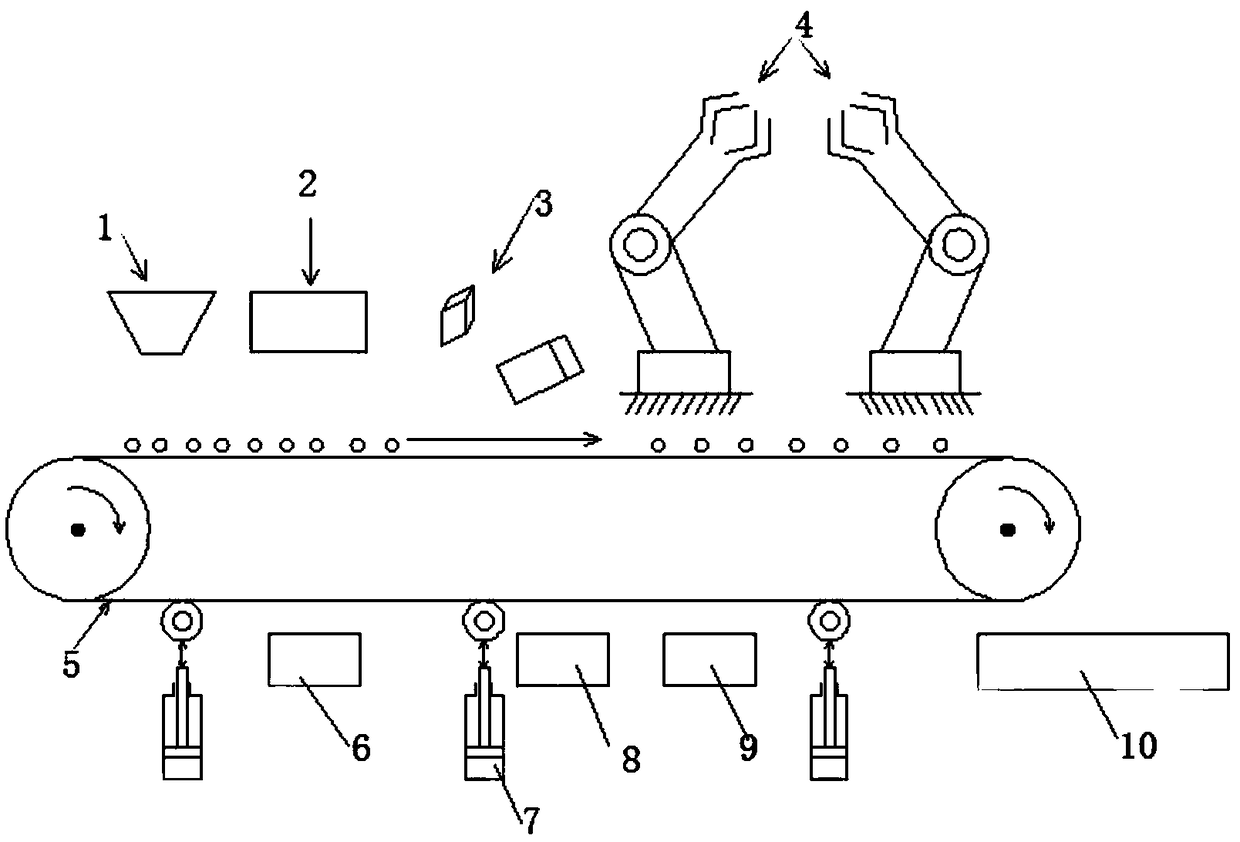Household waste sorting method based on machine vision
A kind of domestic waste and machine vision technology, applied in chemical instruments and methods, sorting, magnetic separation, etc., can solve the problems of time-consuming and labor-intensive, harsh working environment of workers, etc., and achieve the effect of saving labor and high efficiency
- Summary
- Abstract
- Description
- Claims
- Application Information
AI Technical Summary
Problems solved by technology
Method used
Image
Examples
Embodiment 1
[0037] This embodiment provides a machine vision-based domestic garbage sorting method, which specifically includes: performing constant-volume processing on the garbage waiting to be sorted, which can process 3 cubic meters of garbage each time; the feeding speed is 0.5m / s; The accumulation thickness shall not exceed 50cm, and the accumulation width shall not exceed 100cm. The magnetic metal garbage sorting device sorts the magnetic metal garbage from the garbage; the maximum adsorption force reaches 10kg. Then use two Sony high-definition CCD lenses to continuously take pictures of the garbage moving at a constant speed, send the ingested garbage images into the database, and compare and identify them with the inherent images in the database, so as to judge whether it is non-fruit and vegetable garbage. The image of the garbage uses the image contour comparison algorithm to obtain the contour image of the target garbage. For each target garbage contour image, calculate the w...
Embodiment 2
[0064] This embodiment provides a garbage sorting system implementing the above method, the system includes a garbage constant volume funnel, a magnetic metal garbage sorting device, a high-definition CCD lens, a mechanical arm sorting device, a transmission belt, a magnetic garbage collection device, and a vibration device , plastic collection device, bottle collection device, fruit and vegetable garbage collection device, control system, motor, drive device, data analysis device; the transmission belt is provided with a garbage constant volume funnel, a magnetic metal garbage sorting device, a high-definition CCD lens, The mechanical arm sorting device, the vibrating device is located under the transmission belt; the transmission belt is connected to the motor, and the magnetic metal garbage sorting device, high-definition CCD lens, motor, and data analysis device are all connected to the control system. The arm sorting device is connected.
PUM
| Property | Measurement | Unit |
|---|---|---|
| Thickness | aaaaa | aaaaa |
Abstract
Description
Claims
Application Information
 Login to View More
Login to View More - R&D
- Intellectual Property
- Life Sciences
- Materials
- Tech Scout
- Unparalleled Data Quality
- Higher Quality Content
- 60% Fewer Hallucinations
Browse by: Latest US Patents, China's latest patents, Technical Efficacy Thesaurus, Application Domain, Technology Topic, Popular Technical Reports.
© 2025 PatSnap. All rights reserved.Legal|Privacy policy|Modern Slavery Act Transparency Statement|Sitemap|About US| Contact US: help@patsnap.com



